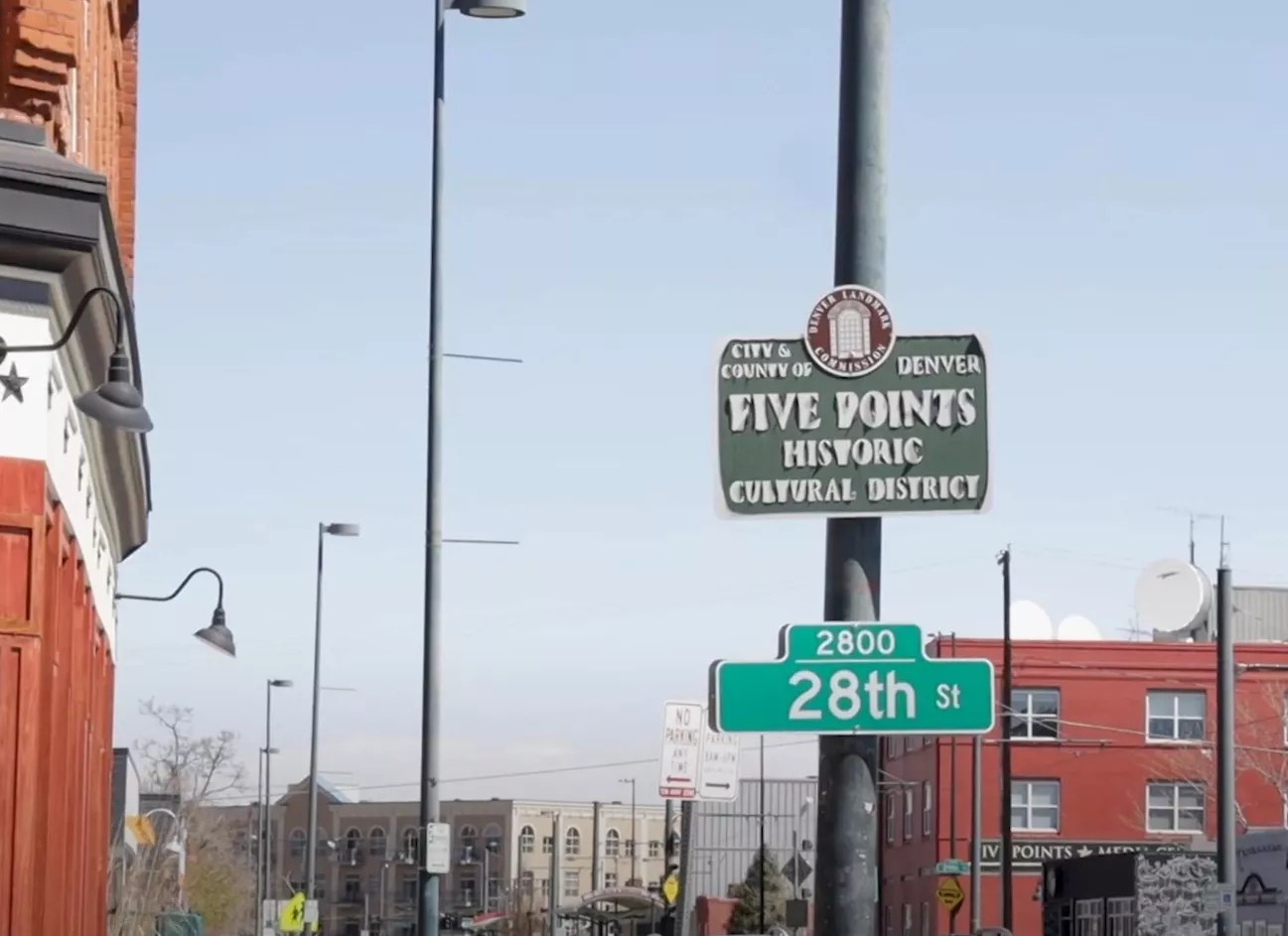

Audio By Carbonatix
Denver’s Five Points neighborhood is absolutely and definitively one of the city’s strongest beating hearts – even if Denverites forget that from time to time. That’s not just a matter of age, though it’s true that the area was one of the first settled in the city; and it’s not just the cultural importance of the history on Welton Street, though that’s a big part of it. If you look at its history, Five Points is possibly the most dynamic and interesting section of Denver – and it still boasts a lot of things to do.
Five Points was named for the streetcar stop at the intersection of 26th Avenue and 27th, Washington and Welton streets. That it was a main streetcar spur was likely why it grew as quickly as it did – the 1871 line from Auraria (then a town, not a campus) up Champa Street to Curtis Park made it not only important but easy to access.
As the wealthy tend to do, they left the neighborhood after a time, most of them moving to Congress Park by the 1920s, when the Welton corridor was establishing itself as “The Harlem of the West,” a thriving business hub that also hosted a number of jazz clubs where artists like Billie Holiday, Miles Davis, Count Basie, and Duke Ellington played. After World War II, many Japanese-Americans relocated from wartime internment camps to reside in the neighborhood, and the Hispanic population grew as well.
The ebbs and flows of culture in Five Points left a mark in a number of ways that – thankfully – linger. Some of the things on this list are evidence of that – others are just indicative of the citizenry that remains happy to call this slice of Denver home. And please note: this list doesn’t take into account Coors Field, which, while it borders Five Points, is generally considered to be in LoDo; and it leaves the gentrified hubbub of RiNo to other, more modern attention.
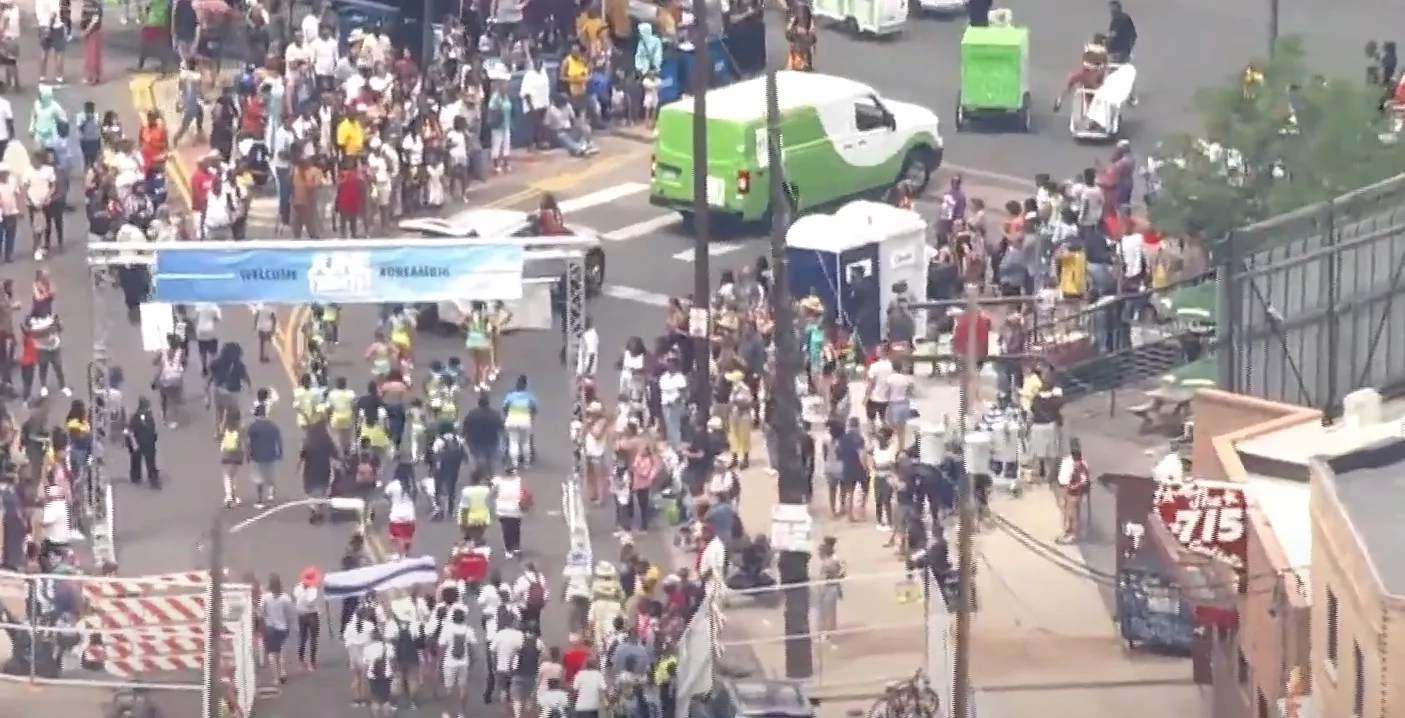
Juneteenth 2021, the first year it was recognized as a Federal holiday
Celebrate Juneteenth on Welton Street
June 14-15, Noon-8 p.m.
27th and Welton Street
When people think about Five Points in Denver, one of the things they’re often focused on is the massive Juneteenth celebrations that have taken place in that neighborhood since the 1950s. It’s a storied history, very much worth reading about, but to really experience it, you need to be on the block and part of the party. The Juneteenth Music Festival, as it’s now called, is one of the U.S.A.’s biggest and most popular celebrations of the apocryphal day upon which the last of the nation’s enslaved people learned of their freedom. It’s a two-day block party and street festival complete with live music, vendors and a long-standing and impressive parade to mark the occasion.
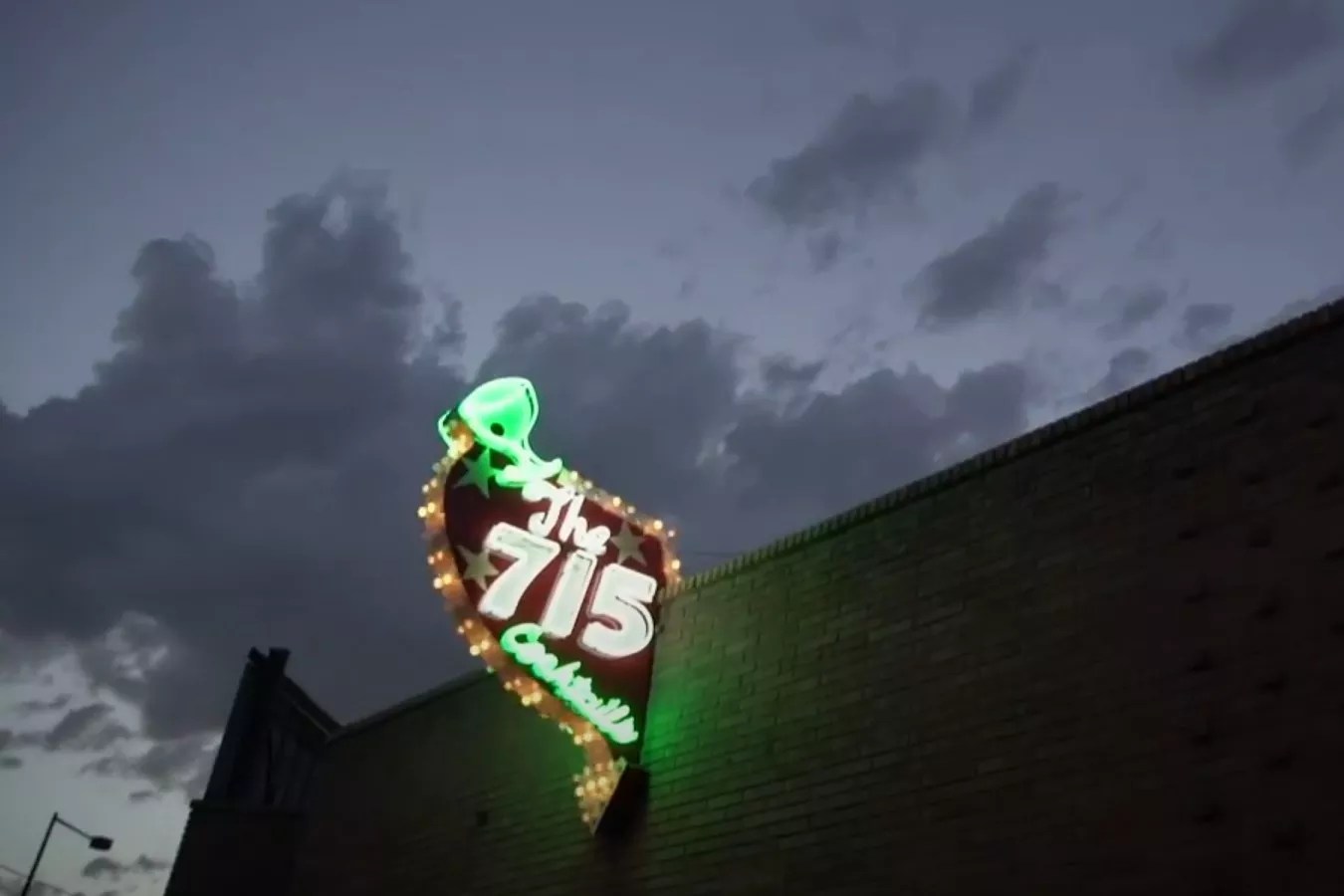
The 715 Club, with its sign once again lit and welcoming.
Down a Beer at the 715 Club
715 East 26th Avenue
Denver has had its share of dive bars, and luckily, some are still around slingin’ drinks. But the 715 Club closed decades ago. It used to be the Charles Cousins 715 Club, a name just pulled from its street address. Cousins started the bar and used his earnings to become something of a Five Points real-estate kingpin back in the day. Back in 2015, the bar owners of the Matchbox and who brought back The Squire did a similar resurrection miracle on the 715 Club, keeping as much of the original place as they could. It’s still dark; it’s still moody – and it’s been open for ten years now after being closed for more than thirty. Drink up.
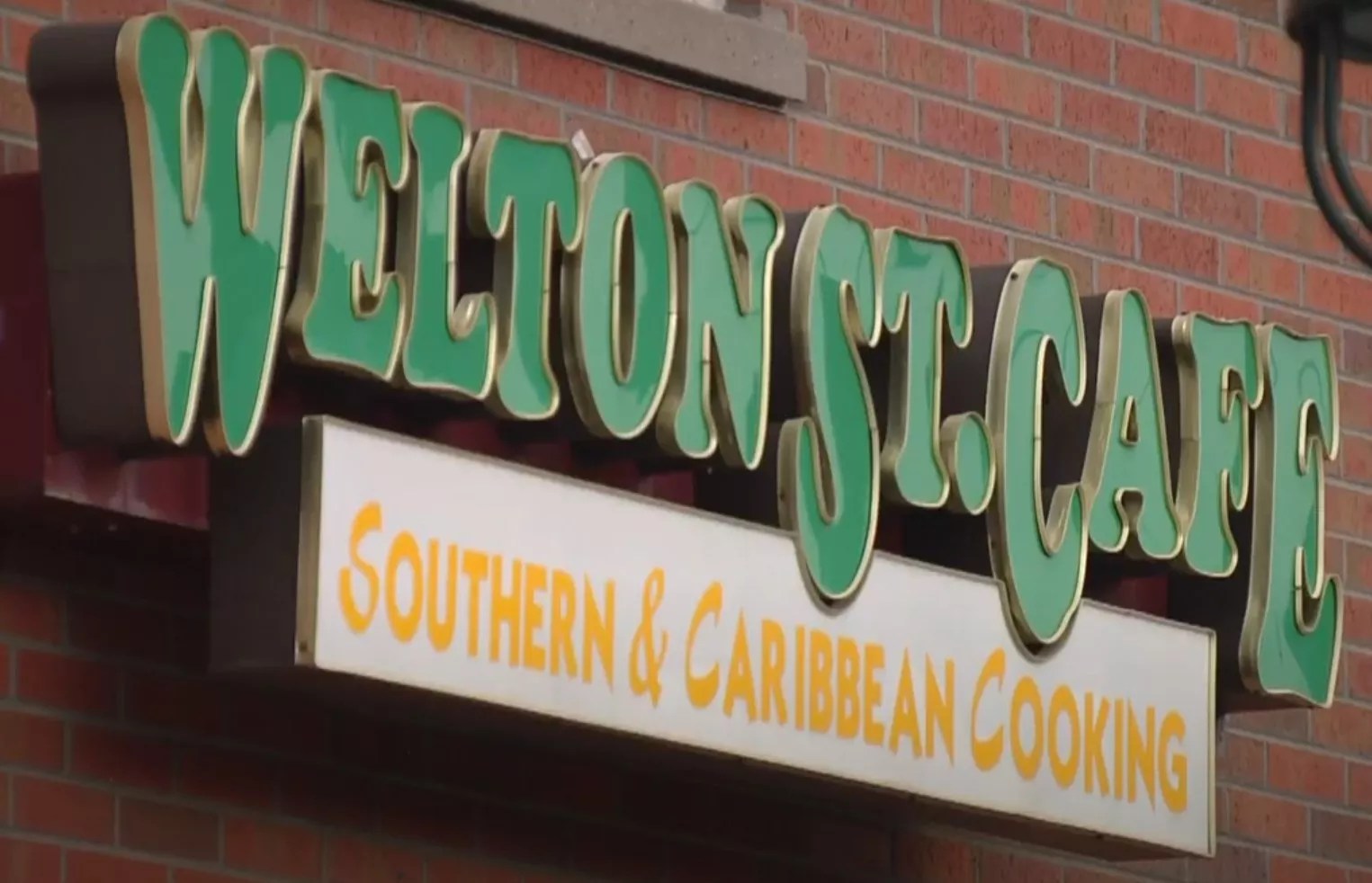
Welton Street Cafe’s old sign might not be at their new venue, but their amazing recipes are.
Eat Right at Welton Street Cafe
2883 Welton Street
And when we say “eat right,” that has more to do with both your spirit and your taste buds than your waistline – the way it oughta be. Welton Street Cafe was homestyle cooking-they refer to it on their website as “soul food with a Caribbean twist” – down a ways on Welton for years, but it recently re-opened in its own building not far from where they made a name for themselves with some of the best food in the city.

Nom nom nosh.
Flip the Bird to Einstein’s at Rosenberg’s Bagels
725 East 26th Avenue
There are probably a number of ways in which the bagels at Rosenberg’s are better than some national chain where the cream cheese is spread so thin that it only has one side. Rosenberg’s takes its bagels seriously, sticking to a “no-toasting” policy, for one. “Our bagels are perfect just the way they are,” says the menu, probably due in part to the fact that the establishment re-created the mineral content of the water it uses in order to make its stuff as authentically NYC-style as possible. Is that going too far for a bagel? No. Just no.
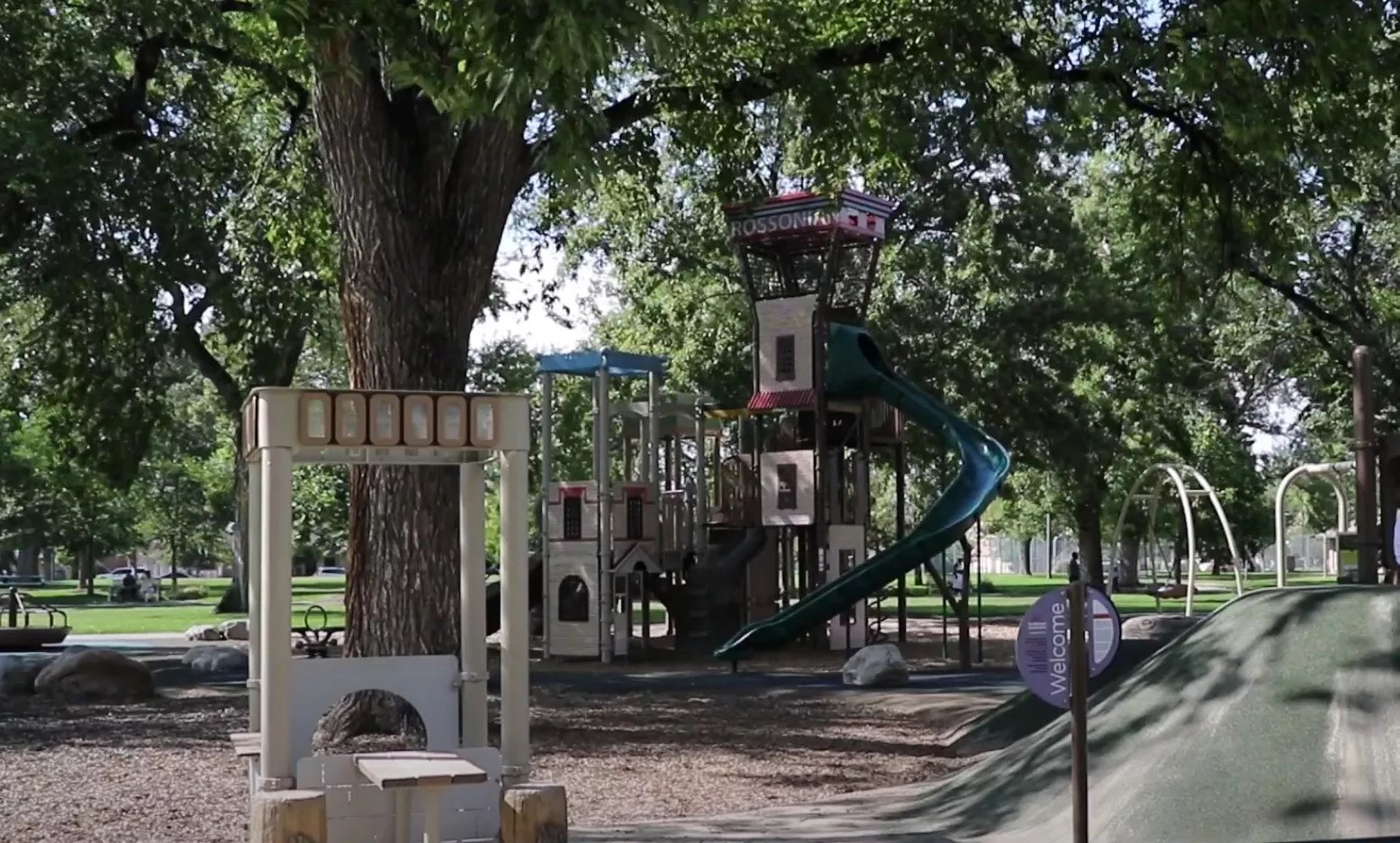
Mestizo-Curtis Park’s new playground—notice that the tower is designed after the Rossonian, the historic hotel and club still standing and awaiting renovation on the corner of Welton and 27th.
Frolic in Mestizo-Curtis Park
31st Avenue and Curtis Street
It’s Denver’s oldest park, dating back to 1868; the “Mestizo” was added in 1987 to better reflect the changes to the neighborhood surrounding it and the cultural significance of the Hispanic families that called it home. On any given day, you can find joggers, kids playing on the brand-new playground equipment and dogs and their owners. The one thing you won’t find is a public pool, not since last year when it was closed for renovation. But fear not: it’s coming back and is scheduled to be completed and opened back up to the public in 2027.
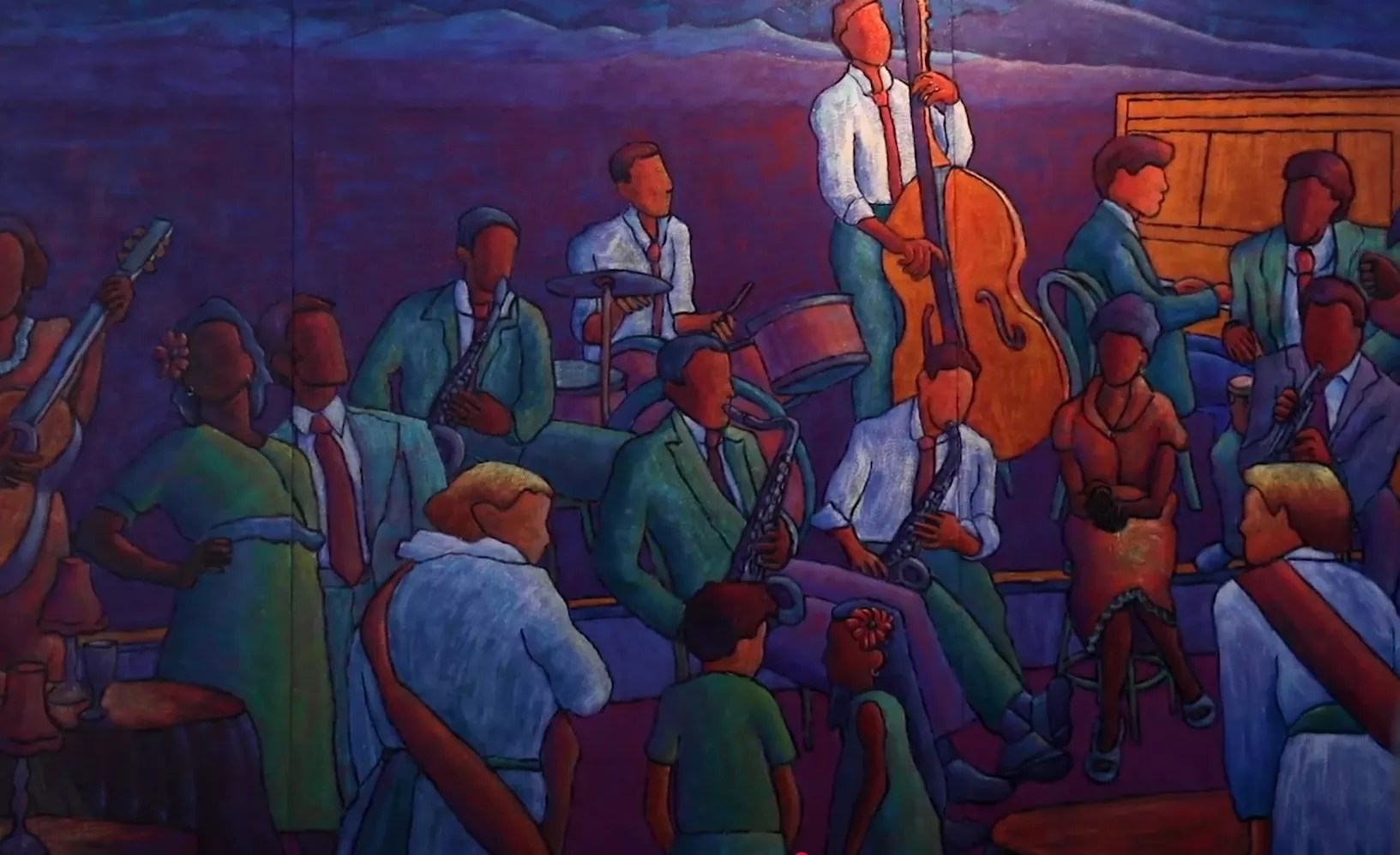
Tony Ortega’s mural on an exterior wall of The Savoy speaks of its varied history.
See a Show at The Savoy
2700 Arapahoe Street
The Savoy in Five Points has seen its share of history and offered a lot since its construction in 1889. Originally, the ground floor was retail space, while the second floor was a social hall. Over the years, it housed apartments, dance studios, a bakery, drug stores, grocers, an extract and candy manufacturer, a coffee house and much more. These days, it’s a unique venue with its eye on the arts and its heart in its history. If only those original tin ceilings could talk.
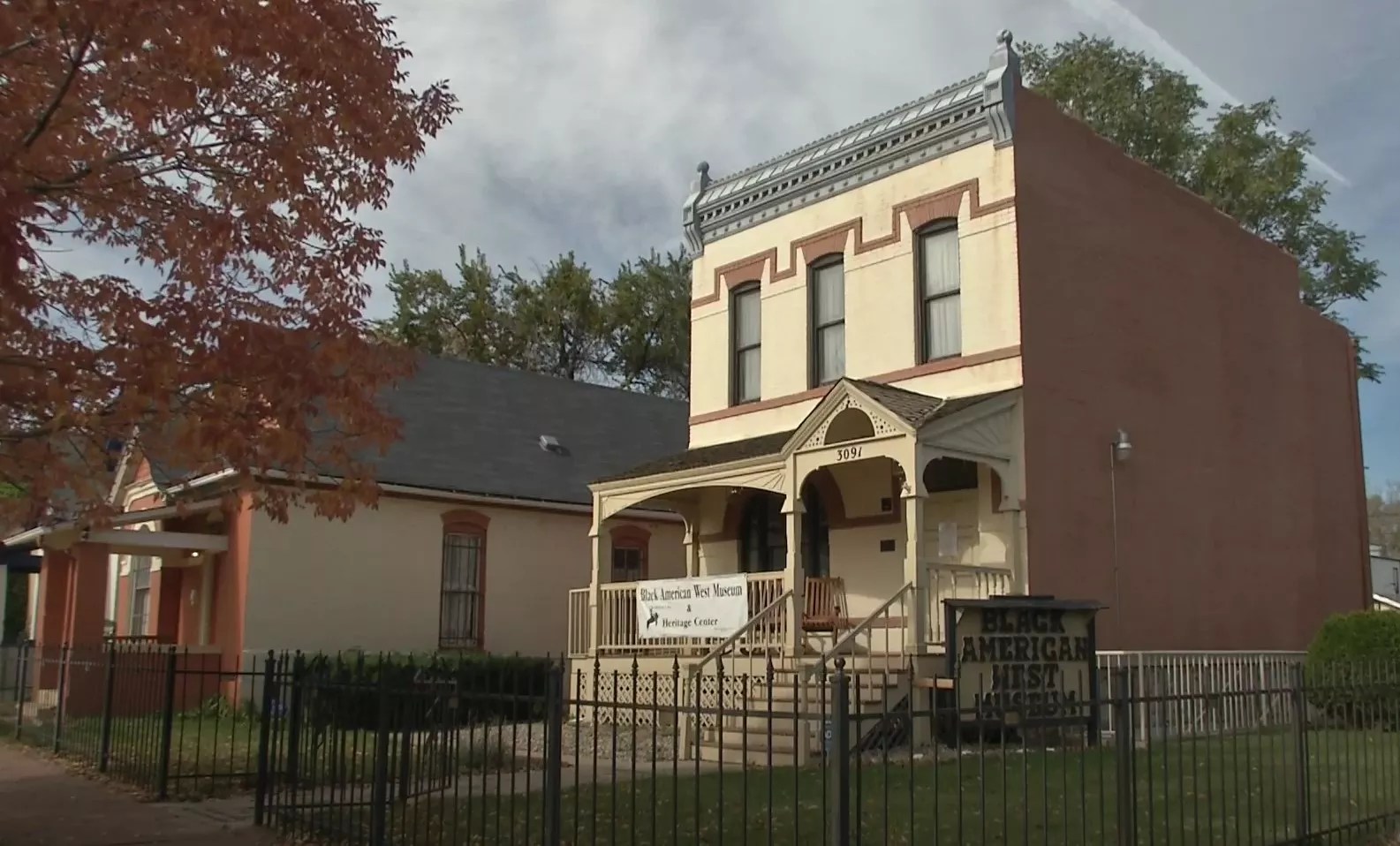
The Black American West Museum isn’t just about the West, but about Five Points history itself.
Learn Something at the Black American West Museum
3091 California Street
When storyteller Paul W. Stewart founded the BAWM in 1971, he chose the location purposefully – it had been the home of Dr. Justina L. Ford, Colorado’s first licensed African American female doctor. Stewart says he grew up being told that “there were no Black cowboys,” which we know is far from the truth, despite what 1950s TV and film might otherwise portray. But that’s just scratching the surface of the exhibits on display in this must-see Denver attraction. The museum is only open from 10 a.m. to 2 p.m. on Fridays and Saturdays, so plan ahead. Tickets are available online, or on a walk-in basis, if available.
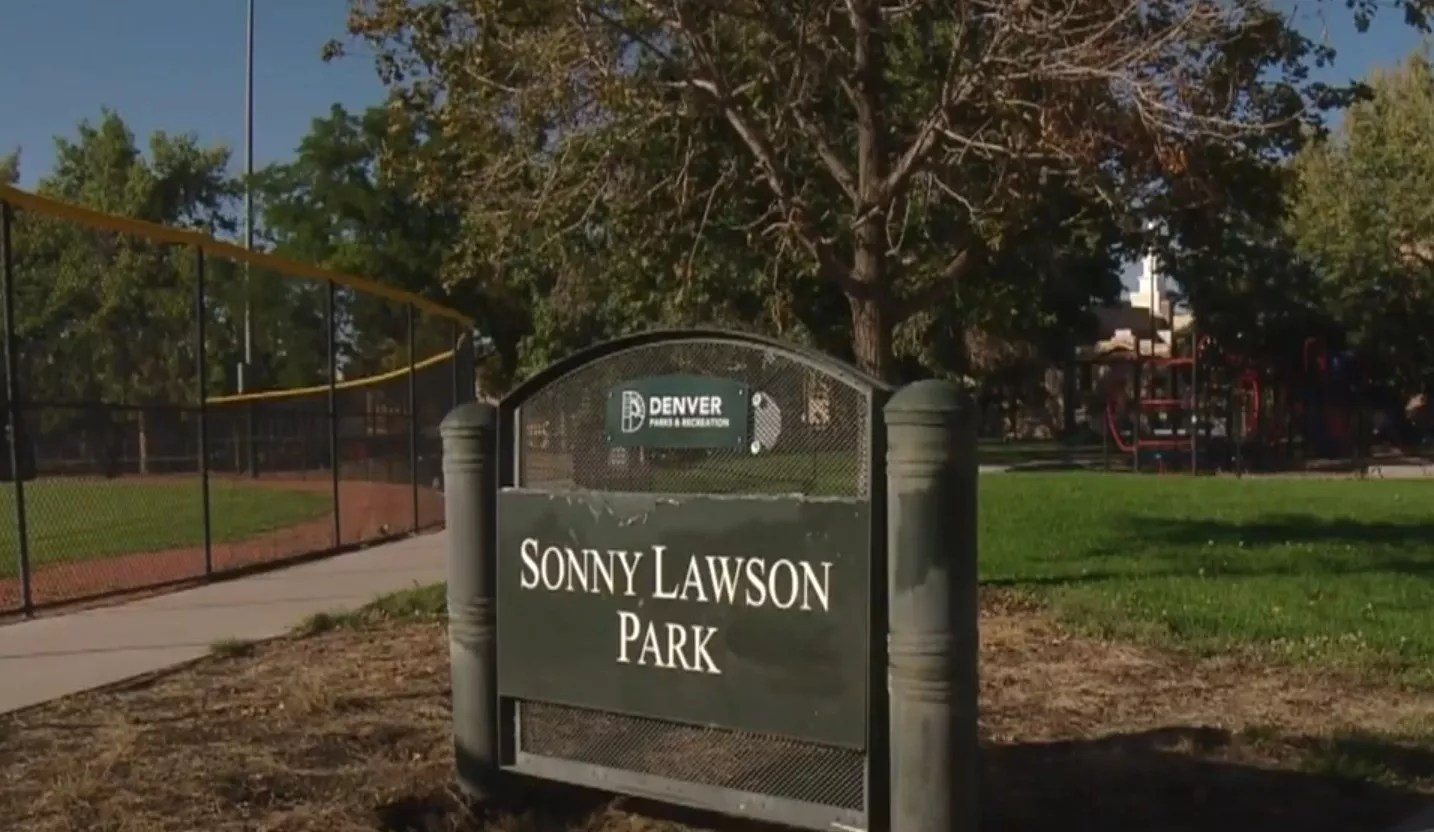
Sonny Lawson Park: play ball.
Play Ball at Sonny Lawson Park
2301 Welton Street
Whether it’s softball or kickball or sloshball or just you and a pal having a catch, Sonny Lawson Park is here for it. And has been for a while, even before it was officially named for Five Points businessman and politico Lawson. It’s had its ups and downs over the years, but it’s an important place – it hosted the first Negro League baseball games in Denver, and still supports teams that want to take the field, swing big, and try to touch ’em all. And not for nothing, but the park is right next to the Blair-Caldwell African American Research Library, a vital resource for African-American genealogical study.

The Casino Cabaret is only one of a few remaining historic music venues in Five Points.
Rock Out at the Roxy or Cervantes Masterpiece and Other Side
2551 Welton Street and 2637 Welton Street
The Roxy started out as a neighborhood theater meant for black audiences and what were then called “race films,” which were movies created by Black-owned production companies that featured black performers. It was also home to live performances by the likes of Louis Armstrong and Billie Holiday – and carries on that tradition today, featuring some of the best up-and-coming music – especially hip-hop and rap, but embracing all genres. Less than a block down, Cervantes Masterpiece is a unique dual-act venue that was once the Casino Cabaret, where acts “date back to the Cotton Club days of the 1930s when jazz greats such as Duke Ellington, Count Basie and Benny Goodman took the stage,” and still prides itself on featuring the best in live music. The Roxy and Cervantes are two of the reasons that Welton Street is still singing.
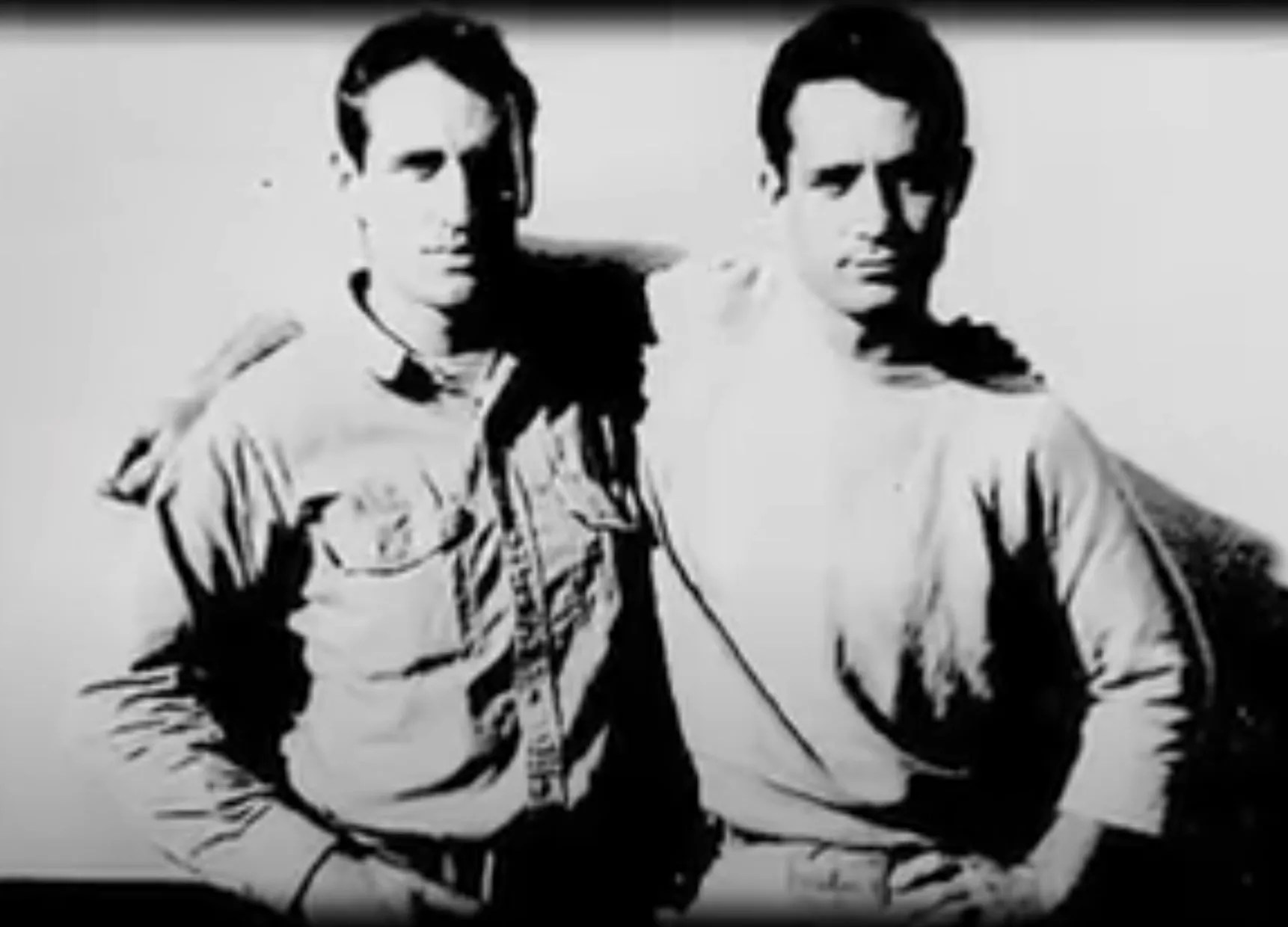
Neal Cassady (L) and Jack Kerouac (R)
Walk the Streets of the Beats
Just hoofing it around the neighborhood might put you in touch with some of the counterculture’s most intriguing characters – Neal Cassady, who lived on Champa Street, and Jack Kerouac, who came to Denver to live, work and experience the life he’d write about in On the Road. The presence of that poetic powerhouse is still felt on the streets of Five Points and still lives in the memories of some who call it home. Two of those are neighborhood residents John Hayden and Keith Pryor, whose new gelato shop Thicks is a precursor to the opening of a Beat-generation shop planned to open soon in the little shop attached to where Cassady once lived, and where Kerouac and Ginsberg and who knows who else once stood. History is baked into the flagstone sidewalks of Five Points, and not just in its past, but also its present. And future.